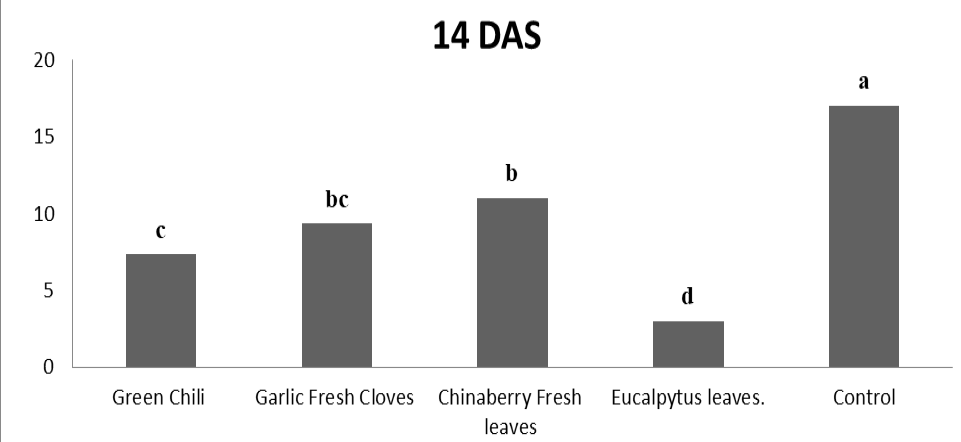Assessment of Different Indigenous Plant Extracts Against Pea Aphids (Acyrthosiphon Pisum) Under Field Condition
Riaz Hussain2*, Adnan Ihsan1*, Waqar Khan1, Shiraz Malik1, Hamza Jameel1, Hidayat Ullah3, Shahab Ahmad4, Jawad Anwar5 and Murad Ali6
1Department of Entomology, The University of Agriculture, Peshawar, 25100, Khyber Pakhtunkhwa, Pakistan; 2Department of Entomology, The University of Agriculture, Swat, 19120, Khyber Pakhtunkhwa, Pakistan; 3Department of Plant Breeding and Genetics, The University of Agriculture, Swat, 19120, Khyber Pakhtunkhwa, Pakistan; 4Department of Plant Breeding and Genetics, The University of Agriculture, Peshawar, 25100, Khyber Pakhtunkhwa, Pakistan; 5Department of Agricultural Chemistry, The University of Agriculture, Swat, 19120, Khyber Pakhtunkhwa, Pakistan; 6Department of Zoology, Islamia College, University Peshawar, Khyber Pakhtunkhwa, Pakistan.
*Correspondence | Riaz Hussain and Adnan Ihsan, Department of Entomology, The University of Agriculture, Peshawar, 25100, Khyber Pakhtunkhwa, Pakistan; Email: adnanihsanuap40@gmail.com, riazhussain4343@gmail.com
Figure 1:
Mean density of Aphids (A. pisum) plant-1 after 7 days of 1st spray application.
Figure 2:
Mean density of Aphids (Acyrthosiphon pisum) per plant after 14 days of 1st spray application.
Figure 3:
Mean density of Aphids (Acyrthosiphon pisum) per plant after 7 days of 2nd spray application.
Figure 4:
Mean density of Aphids (Acyrthosiphon pisum) per plant after 14 days of 2nd spray application.
Figure 5:
Mean yield kg/ha of pea crop in different treated plot.











